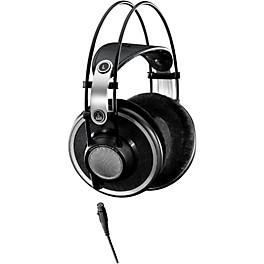Studio Headphones
Relevance
169 matches found
10% Back In Rewards** thru 12/4
Top-Seller
10% Back In Rewards** thru 12/4
10% Back In Rewards** thru 12/4
10% Back In Rewards** thru 12/4
Price Drop
10% Back In Rewards** thru 12/4
10% Back In Rewards** thru 12/4
10% Back In Rewards** thru 12/4
10% Back In Rewards** thru 12/4
10% Back In Rewards** thru 12/4
10% Back In Rewards** thru 12/4
10% Back In Rewards** thru 12/4
10% Back In Rewards** thru 12/4
Price Drop
10% Back In Rewards** thru 12/4
10% Back In Rewards** thru 12/4
10% Back In Rewards** thru 12/4
Open Box:$1,759.99
10% Back In Rewards** thru 12/4
Open Box:$131.96
10% Back In Rewards** thru 12/4
10% Back In Rewards** thru 12/4
10% Back In Rewards** thru 12/4
Open Box:$1,319.12
10% Back In Rewards** thru 12/4
Headphones, once considered simply an accessory, have become a necessary part of virtually every studio's toolbox. From tracking to mixing—you need at least one great-sounding pair of “cans” to offer a new perspective on the music you make. But choosing a pair can be tricky, depending on the intended application and what your level of physical comfort with different styles is. Let's look at different types, one by one.
In-ear phones, sometimes called "earbuds" or "earphones," are the smallest, lightest and least conspicuous choice. They're definitely the best choice for onstage wireless monitoring, and some of the available fit options make for superb isolation. The seal with your ear can make for exaggerated frequency response, so in-ears wouldn't normally be the first choice for mixing or any sort of reference-quality listening. Some people have issues with comfort for long sessions, and some just don't like sticking something in their ear.
On-ear, or "supra-aural," phones rest (as should be obvious) on your ear. They don't offer quite the isolation of either of the other two types of phones, so they're a great choice when you need to be more aware of what's going on around you. Since they don't form a sealed chamber, they tend to have a more open sound with a frequency response that is very stable, so they're an excellent choice for reference monitoring and headphone mixing. They can, though, leak that sound to the rest of the world. This makes them not the best choice for tracking in a room with open mics. Because they rest on your ears, long sessions can get uncomfortable, which is why supra-aural phones with easily replaceable ear pads in a variety of foam density and covering types have become common.
Over-ear, or "circumaural," phones fit around your ear, creating a sealed chamber. Most really high-end phones tend to be of this type, as over-ear phones can fit larger drivers for better, more even frequency response, with a much tighter and more controlled low-frequency response. Circumaural phones tend to be the most immersive listening experience and make excellent reference monitors. Due to the fact that they're the largest headphones, they'll be a little heavier, but modern materials have decreased that weight and made long sessions with over-ear cans much more comfortable.

